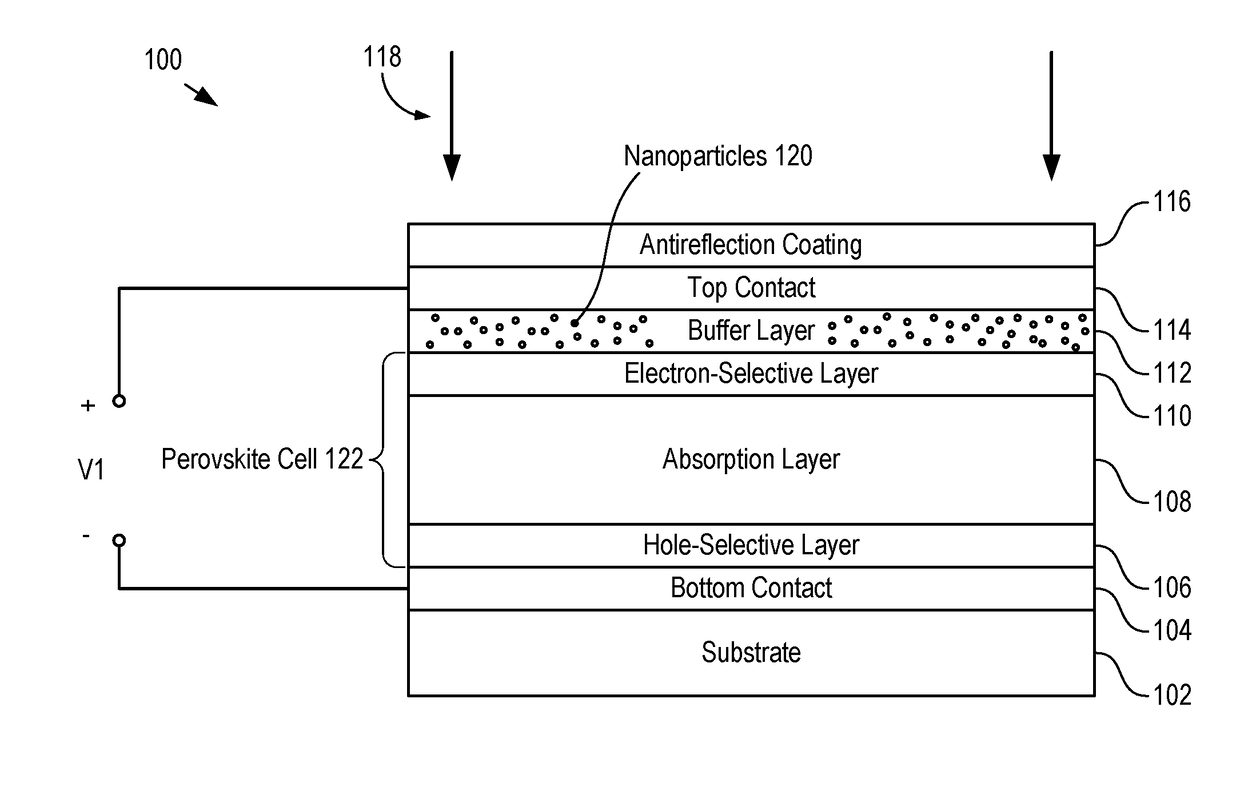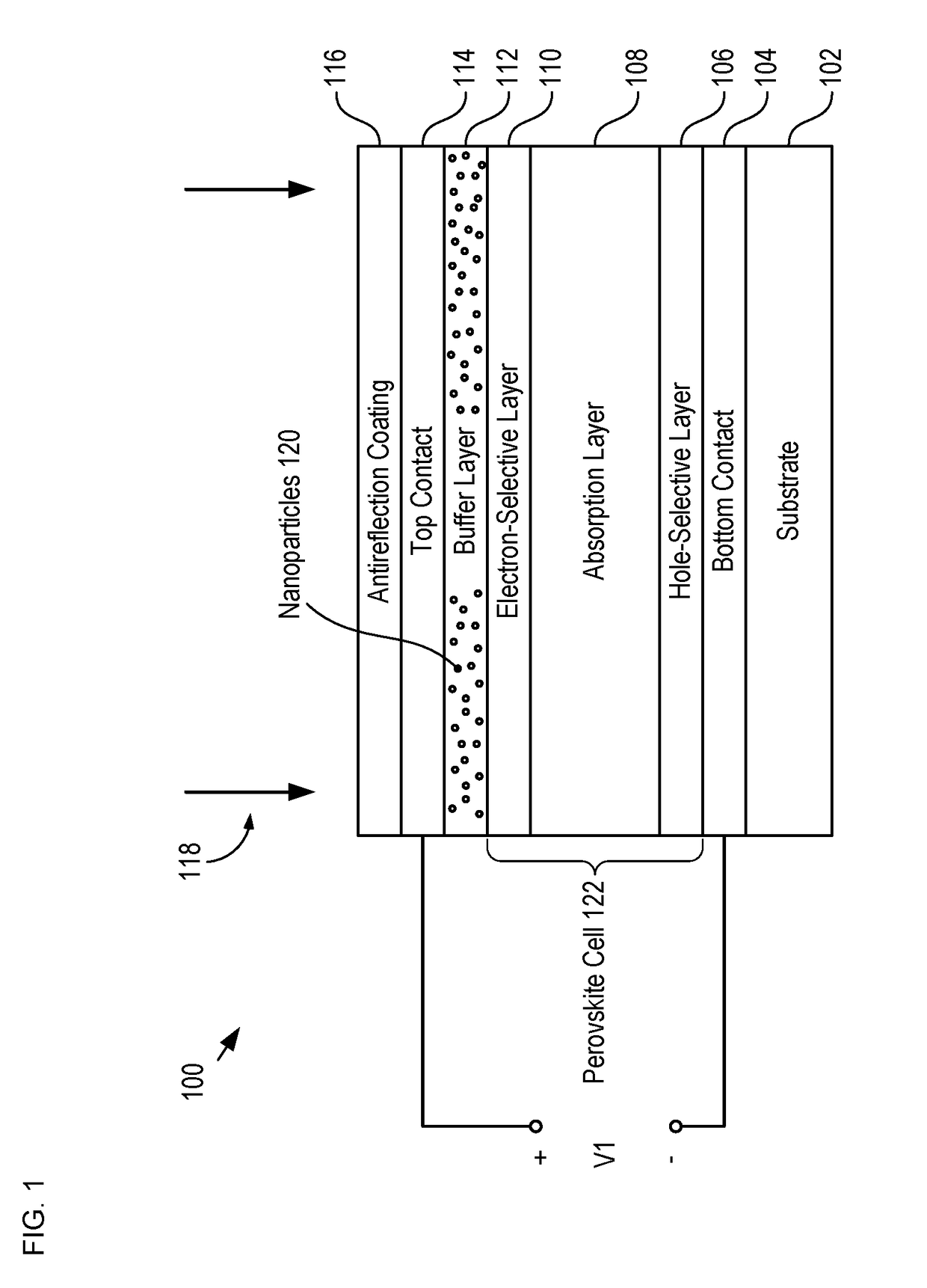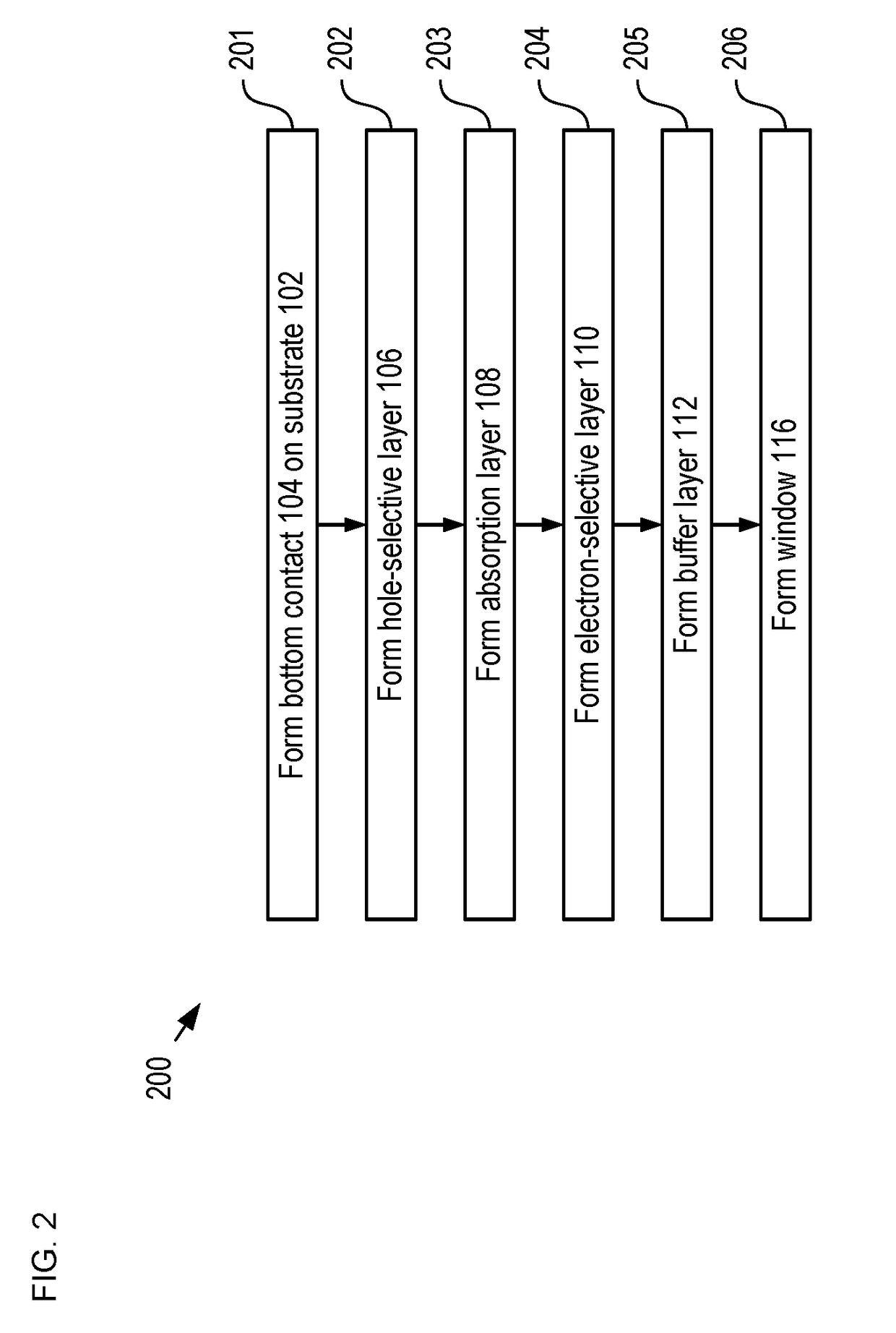Solar Cell Comprising an Oxide-Nanoparticle Buffer Layer and Method of Fabrication
a solar cell and oxide-nanoparticle technology, applied in the field of optoelectronics, can solve the problems of reducing the energy-conversion reducing the efficiency of the solar cell, and increasing the temperature of the device, so as to improve the crystallinity, improve the conductivity, and improve the ability to anneal the ito material.
- Summary
- Abstract
- Description
- Claims
- Application Information
AI Technical Summary
Benefits of technology
Problems solved by technology
Method used
Image
Examples
Embodiment Construction
[0034]FIG. 1 depicts a single-junction, perovskite-based solar cell in accordance with an illustrative embodiment of the present invention. Solar cell 100 includes substrate 102, bottom contact 104, hole-selective layer 106, absorption layer 108, electron-selective layer 110 (also referred to as electron-acceptor layer 110), buffer layer 112, top contact 114, and antireflection coating 116, arranged as shown. Solar cell 100 generates output voltage, Vi, when illuminated with light signal 118. Although the illustrative embodiment is a single-junction solar cell that incorporates a buffer layer in accordance with the present invention, it will be clear to one skilled in the art, after reading this Specification, that the present invention is more broadly applicable to other solar-cell architectures (tandem solar-cell structures, etc.), as well as for the fabrication of other structures, such as organic light-emitting diodes (OLEDs), organic thin-film transistors (OTFTs), and electroch...
PUM
 Login to View More
Login to View More Abstract
Description
Claims
Application Information
 Login to View More
Login to View More - R&D
- Intellectual Property
- Life Sciences
- Materials
- Tech Scout
- Unparalleled Data Quality
- Higher Quality Content
- 60% Fewer Hallucinations
Browse by: Latest US Patents, China's latest patents, Technical Efficacy Thesaurus, Application Domain, Technology Topic, Popular Technical Reports.
© 2025 PatSnap. All rights reserved.Legal|Privacy policy|Modern Slavery Act Transparency Statement|Sitemap|About US| Contact US: help@patsnap.com



